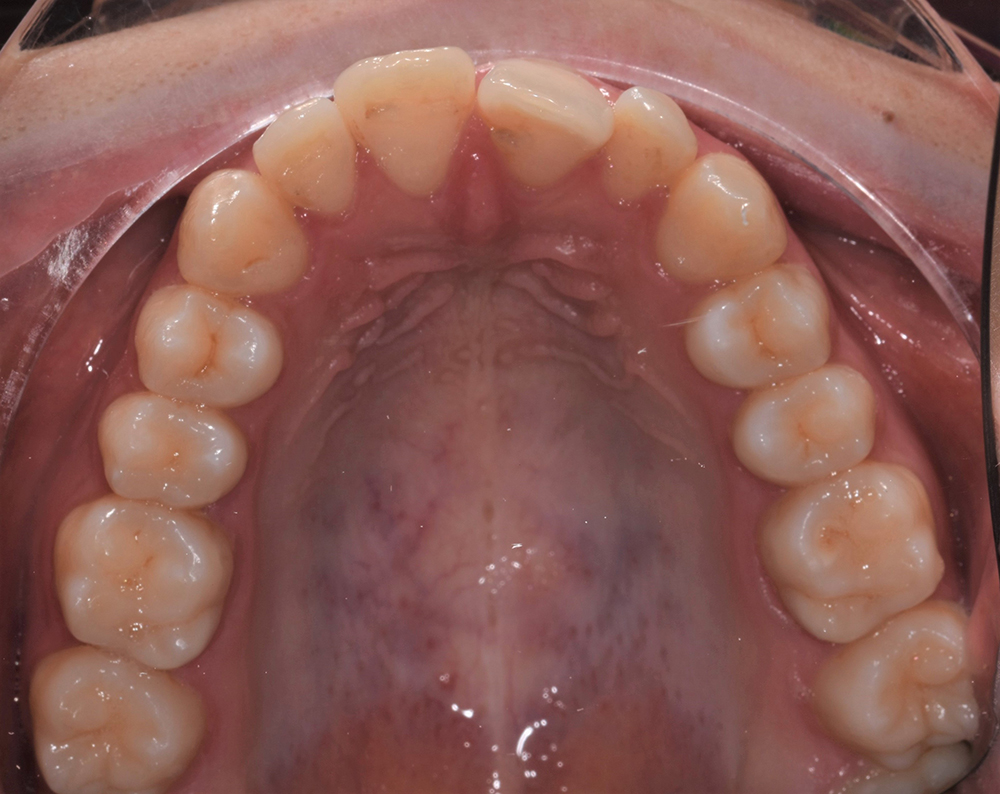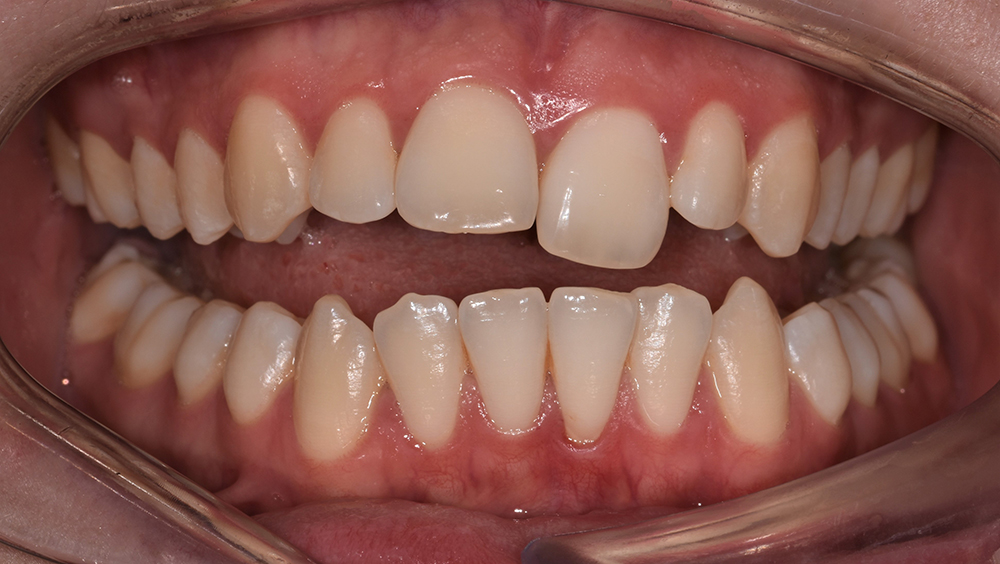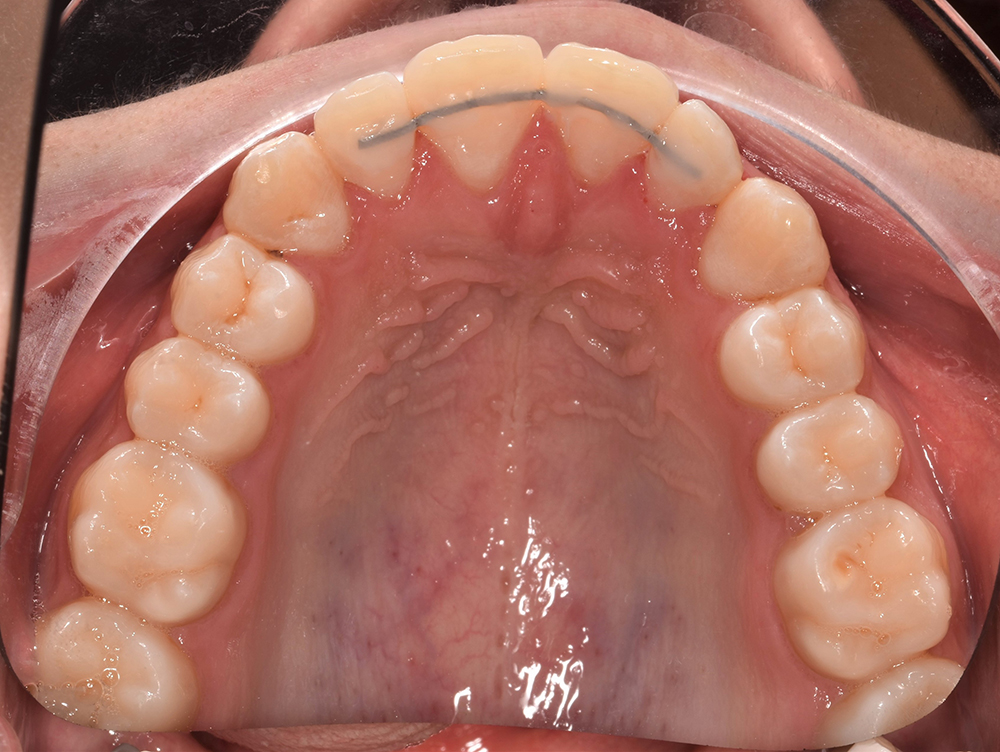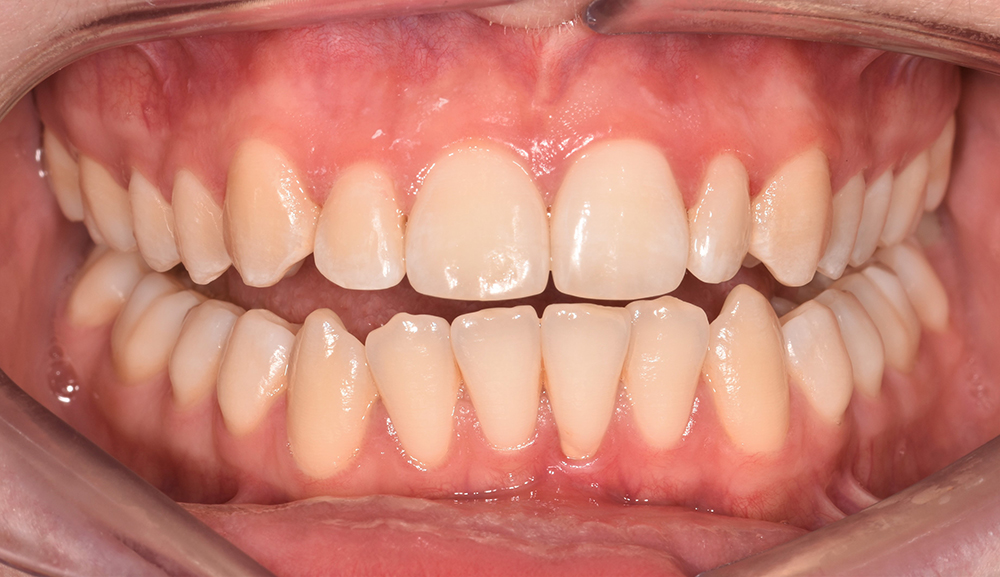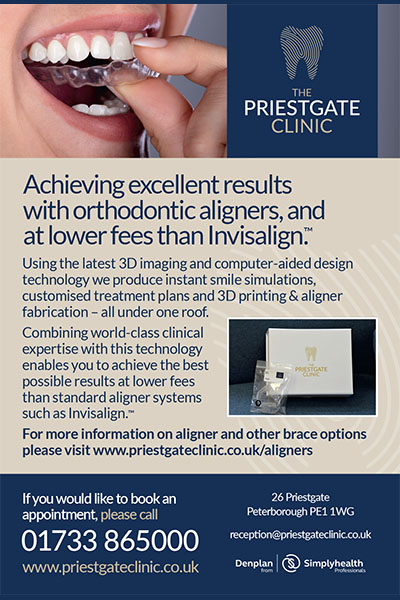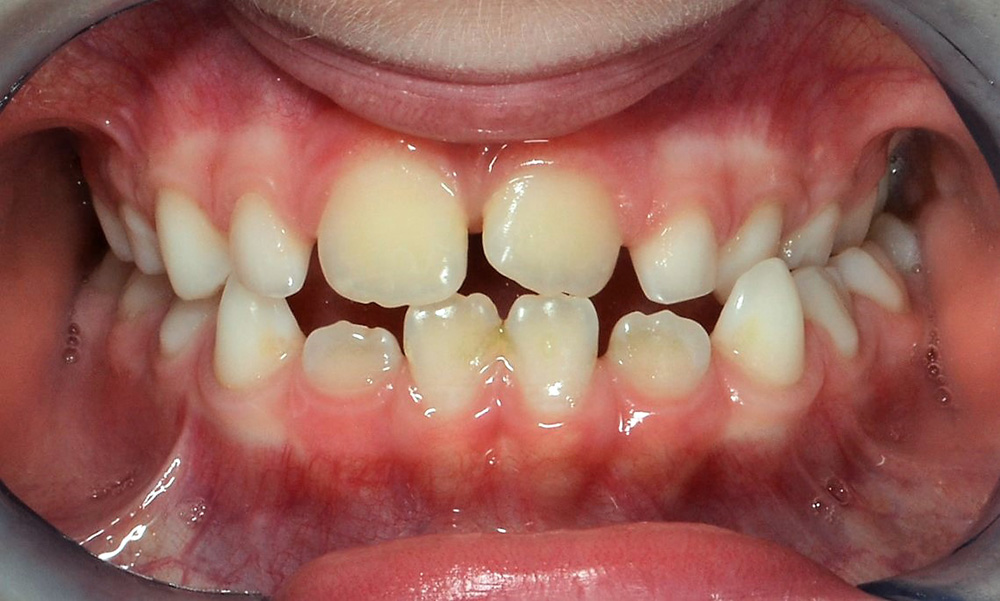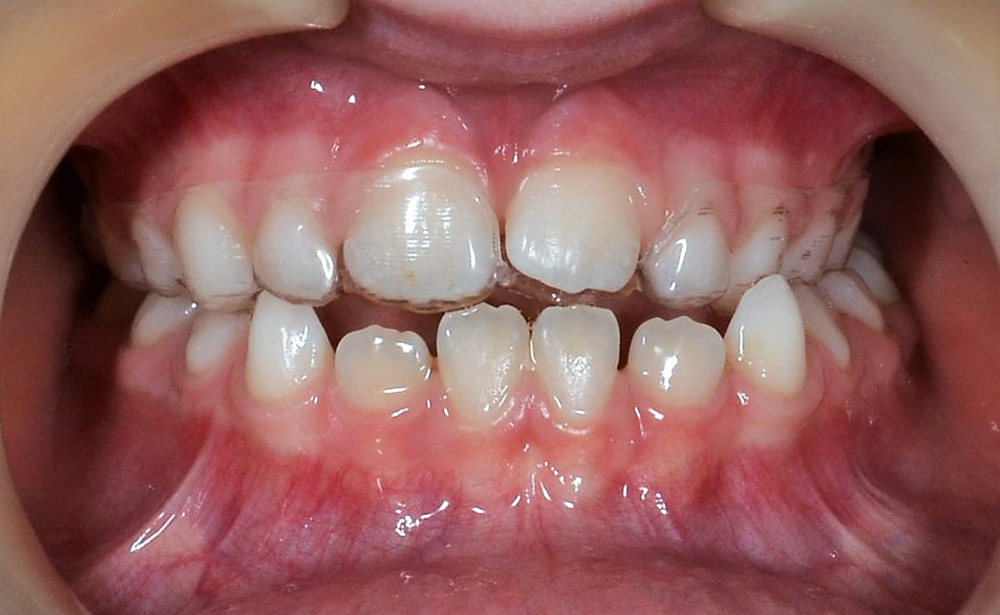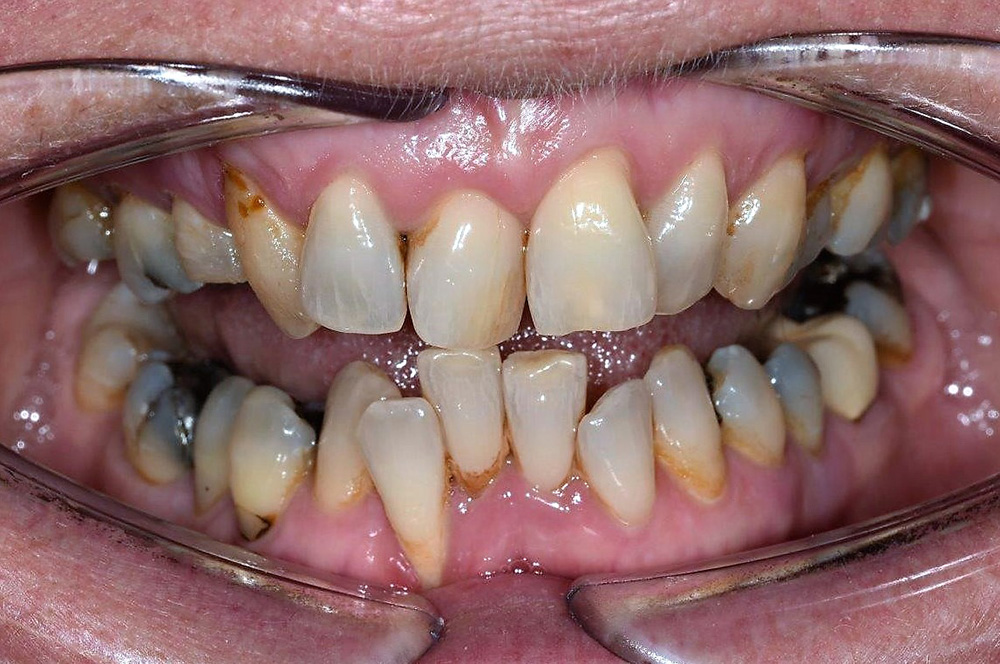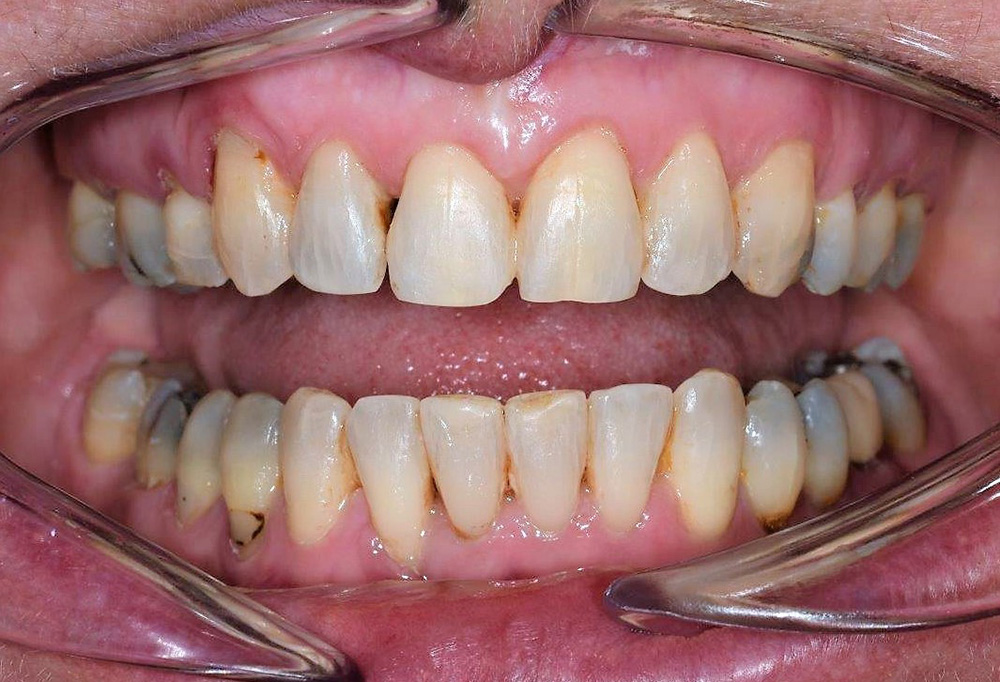What are aligners?
Orthodontic aligners are transparent plastic braces which apply pressure on teeth to straighten them. They act as a consecutive series. Each aligner has small changes to incrementally move teeth, typically by approximately 0.2 mm per aligner. Produced by computer simulations, these create a series of 3D-printed dental models which have an aligner formed on each one.
Pros & cons of aligners
Aligners are a popular form of treatment because they are discreet and can be removed for meals and hygiene purposes. However, an incorrect assumption that aligners provide an ‘easy’, low-effort treatment may lead to disappointment, since teeth will not move properly if each aligner is not worn for over 20 hours per day and correctly fitted every time. Sometimes patients find that there’s actually less to ‘juggle’ with a bonded brace instead.
Upper teeth straightening with 20 weeks of aligners.
Aligners are good at performing simple tooth movements But research studies have repeatedly shown that complex 3D movements and many bite/jaw corrections are not readily achieved, no matter how impressive some computer simulations (and advertising literature) suggest. Therefore case selection is crucial to avoid prolonged treatment times and patient disappointment at the outcome.
Retention (the long-term prevention of slippage of tooth corrections) must be an integral part of every aligner plan, rather than an afterthought. Quite simply, why pay for treatment and then watch it unravel afterwards? Unfortunately, the quicker the treatment the greater the relapse risks. This is because the bone and gum tissues have had no time to adapt. In my experience, aligner treatment often requires a bonded retainer (a thin wire discreetly bonded on the rear surfaces of front teeth, in addition to a removable (aligner-like) retainer worn at night.
Available options
InvisalignTM was the original and most commonly known aligner system. But there are now alternatives available, especially through orthodontic specialists. In particular, the latest 3D orthodontic softwares enable the specialist to personally simulate the tooth movements rather than a remote technician following standardised algorithms. This leads to more customised tooth movements and realistic results. In my experience, this also makes aligner treatment much more cost-effective, with patient fees a quarter to a third lower (compared to typical big brand quotations).
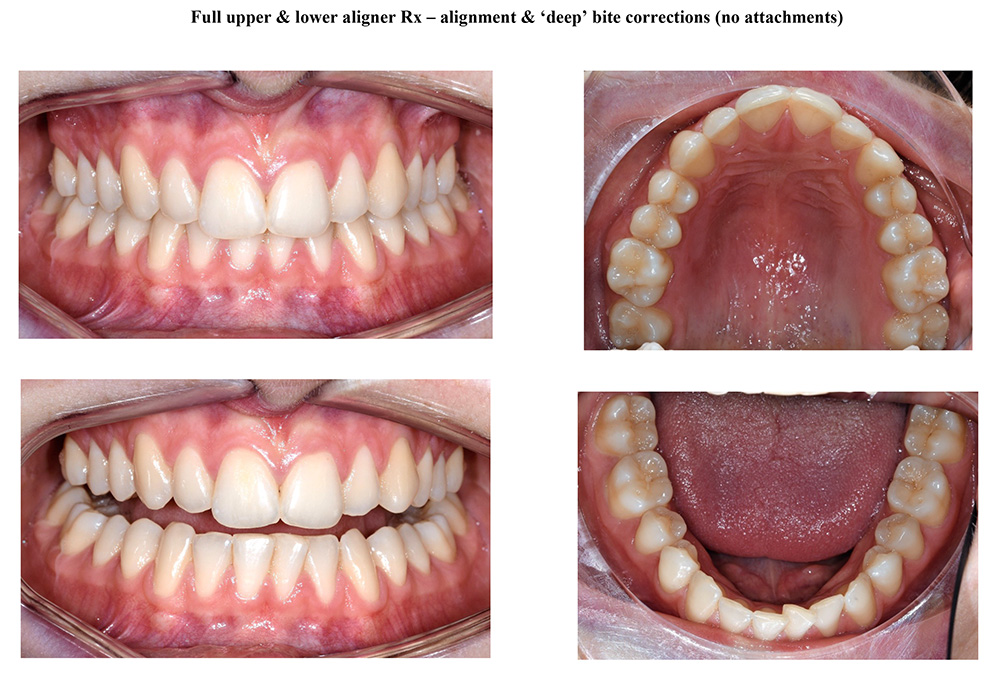
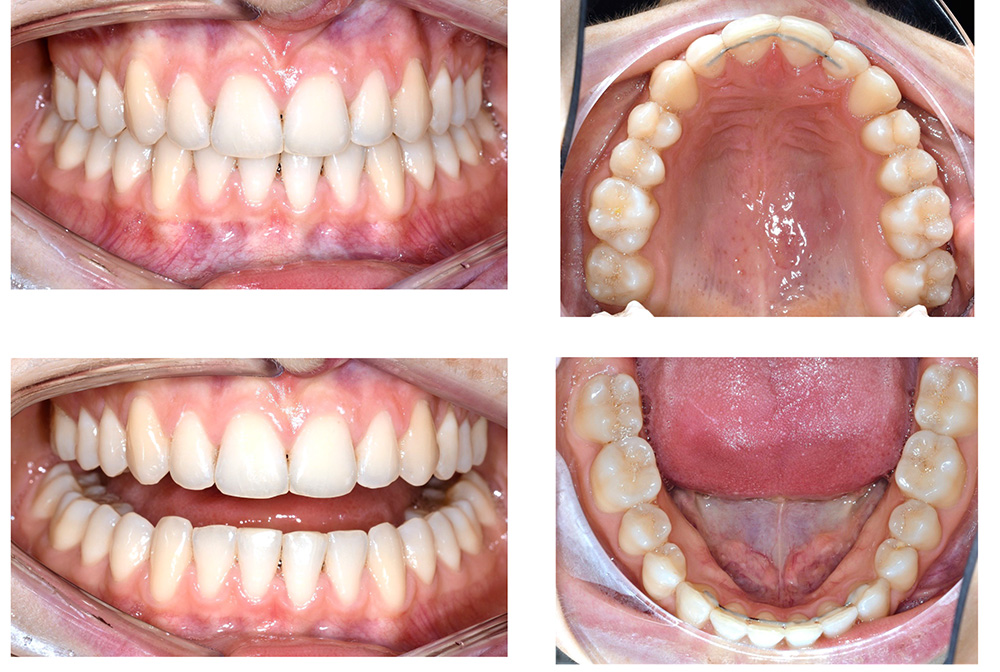
How can I get aligner treatment?
Aligner treatments may be provided by general dentists who have typically been accredited via an aligner company’s one-day course. Notably, there are no qualifications in aligner provision. Commercial titles of ‘gold’ or other provider status only indicate the number of brand cases treated by a dentist. They are not a quality indicator. An orthodontist has undertaken at least three years of full-time specialist training and is qualified to diagnose all forms of dental and jaw anomalies. Therefore they are well placed to judge each individual’s aligner suitability and provide accurate advice on alternatives.
There are often advertisements for free aligner ‘consultations’. Unfortunately these risk becoming sales appointments rather than a full clinical assessment and balanced discussion. Therefore it’s advisable that patients consider several providers before signing up to treatment. There are even internet providers of aligner treatment. But these are not professionally supervised and are not recommended by the General Dental Council.
Aligners are a popular form of treatment because they are discreet and can be removed for meals and hygiene purposes
Age is no Limit for Orthodontics!
Most people associate orthodontics with teenagers wearing metal fixed braces. However, nowadays the range of ages of patients suitable for orthodontics extends from 7 to 70 years! Here are a few pointers regarding age considerations if you’re considering having either your or your child’s teeth straightened.
Primary School Age
There’s a common misconception that children needn’t see an orthodontist until all their adult teeth have erupted. However, most children benefit from a specialist assessment by 11 years of age, and some 7- to 10-year-old children require early interception for bite problems and ectopic teeth (growing in abnormal jaw positions).
A 7-year-old where the upper left incisor’s eruption is impeded, being treated with a transparent aligner brace.
The Teenage Years
This is prime brace time. The adult teeth have erupted and, crucially, facial growth may be harnessed and modified, especially if there’s an ‘underbite’ and small lower jaw size.
Adulthood
Adults form a large proportion of my patients, typically having aesthetic (tooth coloured) fixed braces or transparent plastic aligners. Fortunately, many types of tooth and bite improvements are still biologically possible after facial growth has ceased, because bone is a dynamic tissue throughout life. Therefore, even 70-somethings can be treated successfully, provided that their teeth and gums are disease free. In addition, a small number of adult patients with a severe jaw mismatch and/or airway restrictions benefit greatly from brace treatment combined with jaw (orthognathic) surgery (performed by a Maxillofacial surgeon). A specialist can accurately diagnose features and then advise on the complete range of goals and treatment options for simple through to complex problems.
A 68-year-old lady’s teeth before and after one year of orthodontics.
Richard Cousley is a consultant orthodontist at the Priestgate Clinic in Peterborough. For further advice please contact via the website (www.priestgateclinic.co.uk) or ring the clinic 01733 865000.



